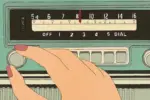There’s something about multi-cam sitcoms that soothes the soul. As a timeless and beloved staple of television culture, they continue to bring joy to people everywhere. They touch on many aspects of life, like family and the workplace, celebrating their delights and addressing their frustrations. They bridge the gap between the audience and studio audience through the shared hilarity when characters deftly land jokes. Their serialized, formulaic nature keeps people entertained, but it’s the distinctive characters and settings that keep fans emotionally invested. However, it has become difficult to form these same attachments with newer multi-cam sitcoms, in large part because of who the producers are and the weak justifications behind creating these shows.
The failure of recent projects like Netflix’s “That ‘90s Show” has not only proved that streaming companies are unfit to produce enduring multi-cam sitcoms, but that the entire concept of the multi-cam sitcoms has been denatured for two reasons. First, there have been overactive tendencies to borrow from past television hits instead of endeavoring to create fresh, new ideas. Second, the pressure to succeed is placed too quickly on new shows, demanding them to do well soon after their initial releases.
A deficiency of innovation in writers’ rooms is one explanation for why multi-cam sitcoms are losing relevance in modern times. In an era significantly influenced by a global pandemic, political polarization and internet-induced anxieties, it would stand to reason that the creative parameters of storytelling could be inspired by these events. After all, adversity can act as great fuel for creative types. Instead, sitcom writers have frequently fallen back on “safe” options, i.e., reboots and spinoffs. They assume that because of these events, audiences have become discouraged from trying new things and prefer to seek solace in old favorites, thus resulting in a constantly expanding arsenal of nostalgia. The dissonance between writers and audience members isn’t sustainable in the long run, however. If streaming companies continue to produce uninspiring confections because they believe audiences only want to relive the past, many of their works will get lost in the shuffle and fail to make significant impacts, as many of them already have.
While not every television show will be regarded equally, the ones that rise to prominence are those written with genuine purpose, not those that cater to the whims of those bent on looking backward. Previous generations of sitcoms continue to be cherished, partly because they reflect then-current social values and trends. Since the 1950s with “I Love Lucy,” multi-cam sitcoms have soaked up cultural idiosyncrasies. Yes, the results are often idealized or unrealistic depictions of people and places, but even when they skew toward the improbable, it doesn’t prevent audiences from enjoying them.
Consider how “Friends” (1994-2004) is a hyper-stylized, hyper-white version of 1990s New York City with infuriating logistics. The show is still treasured by many because of the relationships between the characters and how they create a relationship between the audience and the characters. This is yet another reason why multi-cam sitcoms have endured for so long: they naturally absorb their eras instead of solely existing to pay half-baked homages to bygones. Sitcom writers would be wise to use both the good and bad of the current era and incorporate them into their shows in an organic way.
Another part of the problem is that television shows are generally under pressure to deliver the goods early, similar to movies at the box office on opening weekends. Treating them this way, however, reduces them to mere content. Content is meant to be generated quickly and copiously and consumed in the same way. With this model in mind, there isn’t time for writers to methodically devise likable characters or jokes that stick. In the case of multi-cam sitcoms, many have experienced slow beginnings. However, this doesn’t take away from their overall quality because it allows the audience to witness characters and storylines in more primitive forms and appreciate their growth. A multi-cam sitcom is designed to be a succession but should also be a progression.
Take, for example, one of the 1980s’ most successful multi-cam sitcoms, “Family Ties” (1982-1989). The show became an Emmy-winning hit because its writers wrote consistently about a loving family and gave them strong dialogue, likable characteristics, enough flaws to not seem one-dimensional and realistic situations. There was enough space to let the characters grow, make mistakes and still be seen as thoughtful, complex people. This can be best seen through the Keaton children, who each experience their own intellectual and emotional journeys throughout the show, revealing true depth.
Nowadays, it seems that many modern sitcoms are ridden with holes, and characters exist to either make statements or to be the butts of jokes. If future multi-cam sitcoms expect to thrive, they need to balance both heart and humor. This takes time, more than a single season can give—especially a first one. The acknowledgment that time is an asset to sitcom storytellers should not be exclusive to the decades before streaming; the pressure to become a smash hit within hours of distribution seems to have become the standard. Be that as it may, this standard is not static; it can be rewritten.
Overall, multi-cam sitcoms don’t have to be a thing of the past. In fact, now is the best time to experiment with what the format can be. Today’s abundance of technologies can allow for numerous avenues of creative exploration if writers are willing to recognize this. One good example is AMC’s “Kevin Can F*ck Himself” (2021-2022). The show demonstrated the splendor of contemporary television by capsizing classic multi-cam sitcom tropes and asking the audience to rethink long-accepted portrayals of sitcom couples. More streaming companies — and networks — should mirror that boldness and take sitcom storytelling to new levels.
With any hope, today’s lack of well-written multi-cam sitcoms will not stay permanent. Sitcoms, in general, have so much to teach audiences about human interaction, adversity and finding humor in everyday moments. It is still within the realm of possibility for multi-cam sitcoms to retain relevance in the streaming age. There needs to be more purposeful writing, more willingness to explore and push the boundaries of sitcom storytelling and less reliance on the past to compensate for an unimaginative present.
*This article has been written in front of a live studio audience*

















